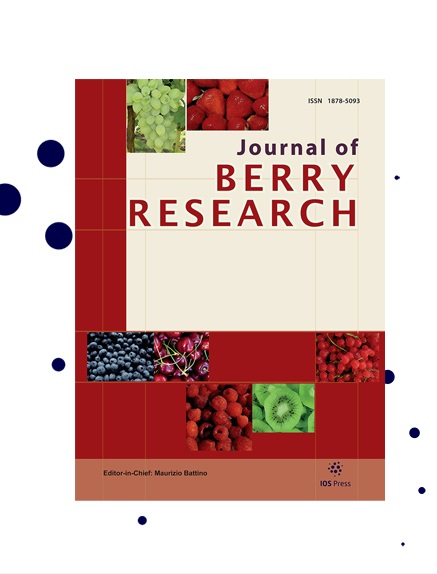A molecular protocol for Early Sex Discrimination (ESD) in Actinidia spp
IF 1.4
4区 农林科学
Q3 PLANT SCIENCES
引用次数: 2
Abstract
Dioecism and an extended juvenile phase of 3–7 years in kiwifruit hinder the progress in breeding new cultivars. The identification of fruit-bearing females at an early stage of growth is crucial for breeders. Consequently, molecular markers have become a key tool for identifying female and male plants at an early stage of development. Several efforts were made to identify PCR-based sex linked markers in Actinidia; however, those markers are characterized by a highly polymorphic nature affecting the result of the screening reliability, suggesting the need of more suitable, stable markers, characterized by a consistent transferability among genotypes and species. The main goal of this work was to develop a method for the ultimate discrimination of females from male plants at an early stage of growth using sex-linked markers. We developed an Early Sex Discrimination molecular Test (ESD Test) that allows the discrimination of male and female plants using a simple PCR amplification test. We demonstrate that the test could unequivocally identify the gender of an unknown sample both in the most commercially important species A. chinensis and in further 13 Actinidia species tested with the exception of Actinidia latifolia, where markers fail in gender discrimination. Male genotypes could be easily identified and discarded reducing the cost of a breeding program.猕猴桃早期性别歧视(ESD)的分子方案
猕猴桃的雌雄异株和3-7年的幼年期延长阻碍了新品种的选育。在生长早期鉴定结果雌性对育种家来说至关重要。因此,分子标记已成为在发育早期识别雌性和雄性植物的关键工具。为了鉴定猕猴桃中基于聚合酶链式反应的性连锁标记物,做出了一些努力;然而,这些标记具有高度多态性,影响了筛选结果的可靠性,这表明需要更合适、更稳定的标记,其特征是在基因型和物种之间具有一致的可转移性。这项工作的主要目标是开发一种在生长早期使用性别相关标记最终区分雌性和雄性植物的方法。我们开发了一种早期性别歧视分子测试(ESD测试),可以使用简单的PCR扩增测试来区分雄性和雌性植物。我们证明,该测试可以明确识别最具商业价值的中华猕猴桃和除宽叶猕猴桃外的其他13种测试猕猴桃中未知样本的性别,宽叶猕猴桃的标记无法进行性别歧视。雄性基因型可以很容易地识别和丢弃,从而降低育种计划的成本。
本文章由计算机程序翻译,如有差异,请以英文原文为准。
求助全文
约1分钟内获得全文
求助全文
来源期刊

Journal of Berry Research
Biochemistry, Genetics and Molecular Biology-Biochemistry
CiteScore
3.50
自引率
11.80%
发文量
21
期刊介绍:
The main objective of the Journal of Berry Research is to improve the knowledge about quality and production of berries to benefit health of the consumers and maintain profitable production using sustainable systems. The objective will be achieved by focusing on four main areas of research and development:
From genetics to variety evaluation
Nursery production systems and plant quality control
Plant physiology, biochemistry and molecular biology, as well as cultural management
Health for the consumer: components and factors affecting berries'' nutritional value
Specifically, the journal will cover berries (strawberry, raspberry, blackberry, blueberry, cranberry currants, etc.), as well as grapes and small soft fruit in general (e.g., kiwi fruit). It will publish research results covering all areas of plant breeding, including plant genetics, genomics, functional genomics, proteomics and metabolomics, plant physiology, plant pathology and plant development, as well as results dealing with the chemistry and biochemistry of bioactive compounds contained in such fruits and their possible role in human health. Contributions detailing possible pharmacological, medical or therapeutic use or dietary significance will be welcomed in addition to studies regarding biosafety issues of genetically modified plants.
 求助内容:
求助内容: 应助结果提醒方式:
应助结果提醒方式:


